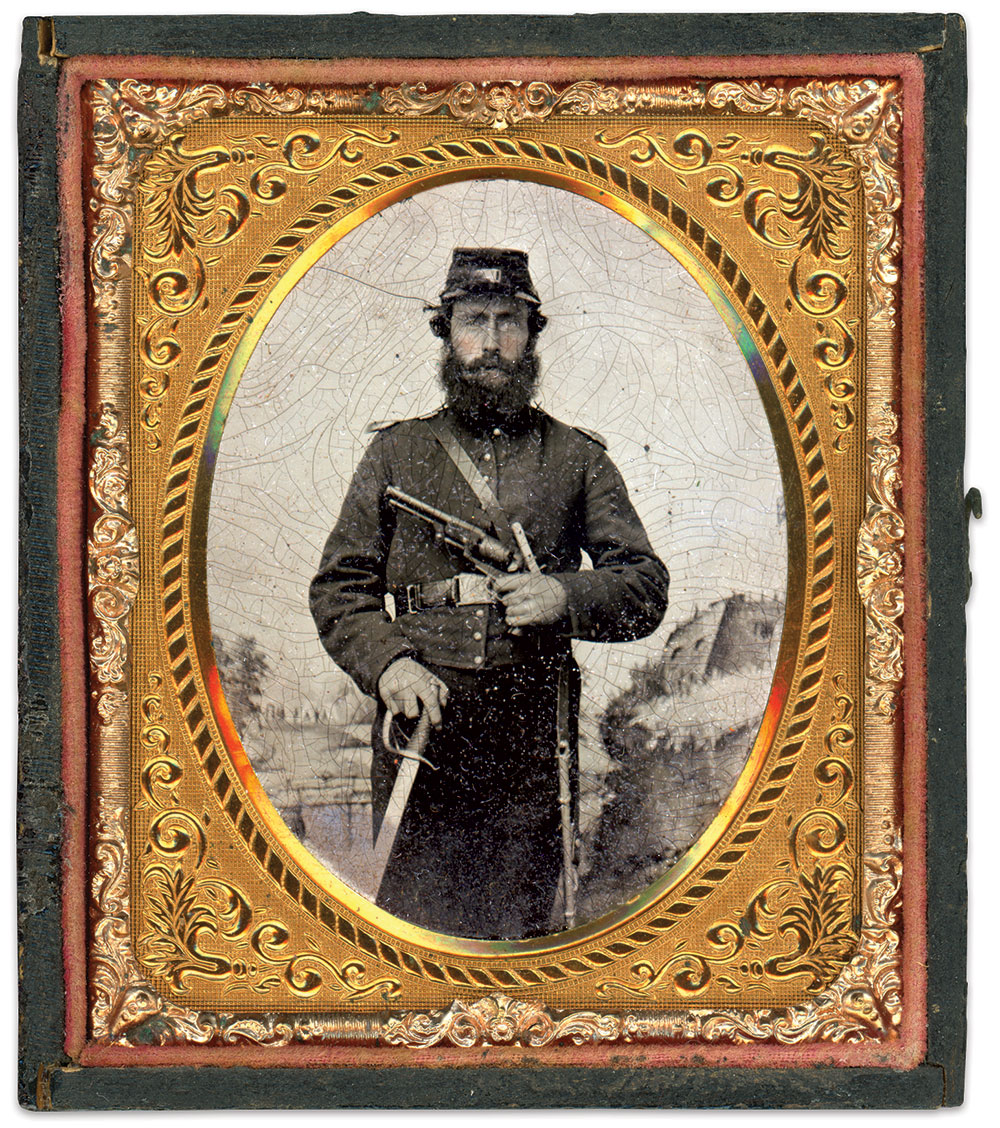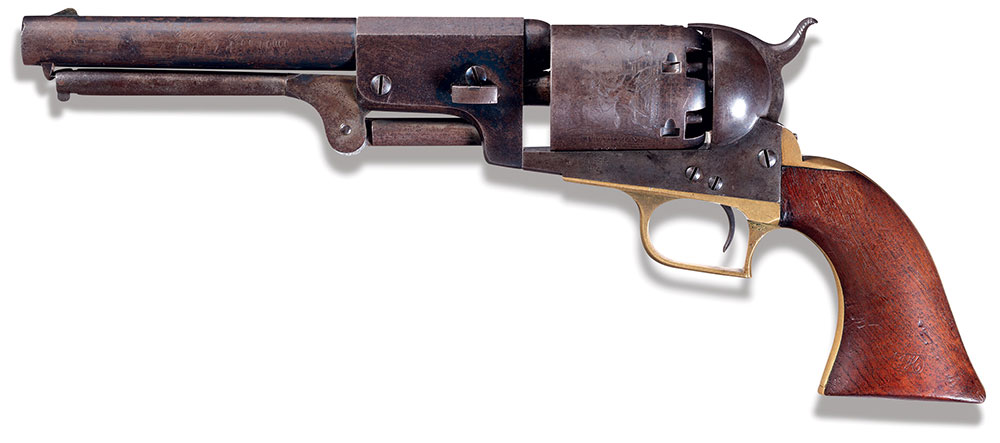By Frank Graves
Portraits of Civil War soldiers armed with any of the three models of Colt Dragoons are uncommon. Images such as this tintype of a Union cavalryman gripping the Second Model are especially rare.

Colt Dragoons were the first production revolvers of any significant quantity from Samuel Colt after the vaunted Colt Walker single-action revolver got him financially back on his feet in the late 1840s. The massive weapons—.44 caliber, six-shot percussion revolvers that weighed in at an impressive 4-1/2 pounds—were produced mostly to satisfy military contracts from 1848 to 1861. The lighter and more streamlined Colt Model 1860 Army revolvers superseded them in 1860.
Approximately 20,000 of the three Colt Dragoon models were produced during its years in production. Only 2,700 of them were Second Models produced in the early 1850s. This is the lowest production number of any in the series. Charles W. Pate, in his forthcoming book tentatively titled The Colt Dragoon Revolvers, estimates that, of that number, approximately 75 percent were for fulfillment of military contracts.
The differences in the three models of the Colt Dragoon revolver mainly involve the configuration of the cylinder stops and the trigger guard style. A close inspection of this portrait reveals details unique to the Second Model: rectangular cylinder stops and a square back trigger guard.

The trooper’s nine-button jacket with shoulder scales, dark trousers and Pattern 1858 cap dates to the early war period, when the Colt Dragoons were phased out of production. Tucked into his waist belt, a privately purchased item intended for an officer, is a non-regulation ivory handled side knife for good measure. The Model 1840 Dragoon saber at his side, known as “The Wrist-Breaker” for its heavy blade and the weight of the Second Model, must have added to the burden of man and horse. Completing the picture is the background painting, known to collectors as the “Fort on the Hill” backdrop, used by St. Louis photographer Ansel R. Butts.
Special thanks to contributing editors Michael R. Cunningham, Ph.D., and Ron Maness for their analysis of the uniform, belt and edged weapon.
Frank Graves has collected American percussion firearms for 59 years, and armed images for about 40 of those years. He is a past president of the Texas Gun Collectors Association and a member of the American Society of Arms Collectors Association, where he has served as a director.
SPREAD THE WORD: We encourage you to share this story on social media and elsewhere to educate and raise awareness. If you wish to use any image on this page for another purpose, please request permission.
LEARN MORE about Military Images, America’s only magazine dedicated to showcasing, interpreting and preserving Civil War portrait photography.
VISIT OUR STORE to subscribe, renew a subscription, and more.

